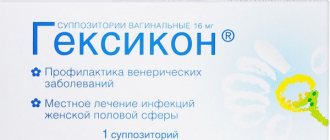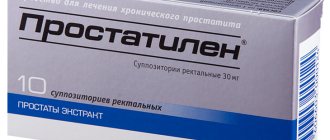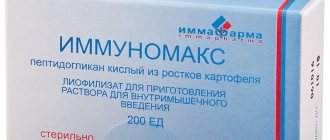Photo: betadin.ru
Photo: betadin.ru
Photo: betadin.ru Photo: betadin.ru
Betadine is an antiseptic. Active ingredient: Povidone-Iodine. Has a bactericidal effect. Betadine has a variety of release forms, which allows it to be widely used in various situations.
You need to know that combined use with hydrogen peroxide and enzyme preparations reduces the effectiveness of both. The drug is dispensed without a doctor's prescription!
Composition of the drug
Betadine suppositories (instructions for use are described below) are vaginal suppositories with a distinct odor and iodine color. They belong to the group of antimicrobial and antiseptic drugs.
Components:
- Active substance - povidone-iodine (200 mg);
- Excipient – macrogol 1000 2800 mg.
Povidone-iodine has immediate bactericidal properties, killing pathogens.
Which is better: Betadine or Terzhinan
Betadine and Terzhinan.
Photo: vchemraznica.ru The drugs are not analogues of each other. Betadine is an antiseptic with the active ingredient Povidone-Iodine. Release form: ointment for external use, solution for local and external use, vaginal suppositories. Terzhinan is a combined antimicrobial drug (active ingredients: Ternidazole, Neomycin sulfate, Nystatin, Prednisolone). Available in the form of vaginal tablets. Indications:
- Treatment of vaginitis caused by sensitive microorganisms, including: bacterial vaginitis; vaginal trichomoniasis; vaginitis caused by fungi of the genus Candida; mixed vaginitis.
- Prevention of urogenital infections/vaginitis, including: before gynecological operations; before childbirth or abortion; before and after installation of the IUD; before and after diathermocoagulation of the cervix; before hysterography.
Both drugs in the form of suppositories must be moistened in water. During pregnancy, Terzhinan is allowed only from the second trimester. Betadine should be used with caution. Terzhinan is available with a doctor's prescription, Betadine is available without a prescription.
The country of origin of Betadine is Hungary. Terzhinan is produced in France. Terzhinan is more expensive than Betadine.
Indications for use
Betadine suppositories are used in the treatment of gynecological diseases, sexually transmitted infections and in the prevention of inflammation before various types of operations.
The drug is effective in treating:
- colpitis;
- candidiasis;
- genital herpes;
- vaginal trichomoniasis;
- chlamydia;
- gardnerellosis;
- mycoplasmosis;
- vaginal infections due to taking steroids and antibiotics;
- cervical erosion;
- in the prevention of inflammation of the genital organs (before surgical interventions);
- in the restoration of changed microflora;
- as prophylaxis in the preoperative and postoperative period, as well as before diagnostic and obstetric procedures.
For what diagnoses is it recommended?
A wide range of gynecological diseases of various origins have indications for treatment with betadine:
- trichomoniasis and other sexually transmitted infections;
- nonspecific vulvovaginitis and cervicitis;
- prevention of infectious complications before surgical interventions in obstetrics and gynecology.
Betadine suppositories have a wide spectrum of action and are effective against gram-positive and gram-negative bacteria, fungi, protozoa and many viruses. When applied topically, the drug practically does not penetrate into the bloodstream, so it can be used during pregnancy and lactation.
Betadine vaginal suppositories are of great help for the prevention of sexually transmitted diseases, if they are used correctly immediately after unprotected sex. Using suppositories with iodine within 2 hours after “doubtful contact”, a woman significantly reduces the likelihood of contracting any infection.
Efficiency
The drug has antiseptic, disinfectant, bactericidal and antifungal properties. When the suppository is absorbed, a large accumulation of free iodine is formed, which has a strong bactericidal effect, killing pathogens in the first minute of its activity.
The therapeutic effect of the active substance lasts for a long time.
Betadine suppositories are a topical medication; they are not absorbed into the general bloodstream.
Contraindications for use
Betadine suppositories (instructions for use are attached below), practically, like all medications, have contraindications for their use.
These include:
- 2nd and 3rd trimesters of pregnancy;
- children under eight years of age;
- chronic infection, accompanied by rash and itching;
- radioactive iodine therapy;
- thyrotoxicosis;
- benign/malignant tumor of the thyroid gland;
- use of antibiotics;
- hepatitis herpetiformis;
- Dühring's dermatitis;
- individual iodine intolerance.
During the lactation period and from the 2nd trimester of pregnancy, you should take the medication under the supervision and with the permission of a doctor.
Contraindications
The iodine used in Betadine is slowly but absorbed into the blood, which means there is a risk to a woman’s health in certain cases:
- hypersensitivity to iodine-containing substances;
- abnormalities in the functioning of the thyroid gland (especially its hyperfunction);
- severe kidney pathology;
- age under 8 years.
If, after introducing suppositories into the body, dry skin, itching and burning, or severe irritation in the vagina are observed, then use of the drug should be stopped immediately. If relief does not occur within a few hours, you should consult your doctor.
Features of use and dose
Before the procedure, you should thoroughly wash your genitals. Suppositories are inserted into the vagina in the evening, preferably before bed. The suppository should be inserted approximately 3-4 cm. It is advisable to moisten it in water first for better absorption and to avoid irritation. Betadine can be used in the treatment of menstruation.
The dosage and duration of treatment depends on the diagnosis:
- acute vaginitis – 1 suppository 1, maximum 2 times/day for 1 week;
- chronic vaginitis – 1 suppository 1 time/day for 2 weeks;
- for the purpose of prevention - 1 suppository 1 time/day for 5 days.
During therapy, it is necessary to use pads to prevent the leakage of partially released drug.
Pharmacological properties
The level of iodine absorption and removal from the body directly depends on its molecular weight. A drug with a molecular weight of 35,000 to 50,000 or more can be retained in the body. When using vaginal suppositories, the active substance is instantly absorbed, and the amount of active iodine in the plasma increases significantly. Its excretion almost always occurs through the kidneys.
Partial removal of iodine occurs after two days. In general, a significant level of iodine in the blood remains for two weeks and only then reaches normal levels. Over a short period of time after taking the suppositories, the active substance is released, and the permanent concentration of free iodine increases.
It has a powerful bactericidal effect, instantly killing various pathogens. Most viruses and fungi die in the first minute; the main bactericidal effect occurs in the first 30 seconds.
Use of Betadine during pregnancy and breastfeeding
Betadine suppositories (instructions for use are above) are allowed to be used during pregnancy (as prescribed). Breastfeeding is also not a contraindication. Gynecologists do not recommend taking the drug in the 2nd and 3rd trimester, as there is, although a small, risk of a negative impact on the health of the unborn child.
Povidone-iodine is actively absorbed by the placenta, which can affect the functioning of the baby's thyroid glands. For this reason, Betadine is prescribed only after all risks have been assessed. Doctors sometimes prescribe treatment from the 2nd trimester, but such a decision is made only if there is no alternative, safer method of therapy and if there is a serious threat of infection to the fetus.
Betadine should be used during pregnancy only with the permission of a doctor.
During breastfeeding, the medication does not harm the baby, since it is practically not absorbed into the bloodstream.
Which is better: Betadine or Hexicon
Betadine and Hexicon.
Photo: vchemraznica.ru Both drugs are not analogues of each other. Betadine contains Povidone-Iodine. Release form: ointment, solution, vaginal suppositories. The active ingredient of Hexicon is Chlorhexidine. Available in the form of tablets and vaginal suppositories. The drug is indicated during pregnancy, lactation and pediatric gynecology. You also need to know that the dosage form of vaginal tablets Hexicon does not increase the amount of vaginal discharge when used. The drug is indicated for the following processes:
- prevention of sexually transmitted infections (including gonorrhea, syphilis, trichomoniasis, chlamydia, ureaplasmosis, genital herpes);
- prevention of infectious and inflammatory complications in obstetrics and gynecology (before surgical treatment of gynecological diseases, before childbirth and abortion, before and after installation of an intrauterine device, before and after diathermocoagulation of the cervix, before intrauterine examinations);
- treatment of bacterial vaginosis, colpitis (including nonspecific, mixed, trichomonas).
Betadine suppositories can only be used by children over 8 years of age. Pregnant and lactating women are prescribed with caution. Both drugs are indicated without a doctor's prescription. The choice is made by a specialist. Both are used to prevent sexually transmitted infections (use no later than 2 hours after unprotected sexual intercourse).
The country of origin of Betadine is Hungary. Hexicon is manufactured by the Russian Federation. Hexicon is more expensive than Betadine. Price per package from 218 rub.
In the treatment of cystitis
Betadine suppositories (the instructions for use recommend strictly adhering to the dosage and duration of treatment) are appropriate for therapy for cystitis if it is caused by vaginal infections. The drug is used both to treat the disease and to prevent its relapse. Betadine kills pathogens in the vagina, preventing infection from moving from the bladder to the uterus and back.
Treatment of cystitis with Betadine is recommended only with the permission of a specialized doctor. It is necessary to ensure in advance that there are no contraindications. For more effective therapy, the doctor often prescribes Betadine together with another anti-inflammatory drug.
Directions for use in the treatment of cystitis:
- empty your bladder;
- take a shower or bath first;
- moisten the suppository in warm water;
- insert the suppository into the vagina, closer to the cervix;
- lie down for 30-40 minutes.
For cystitis, a suppository is administered once a day for 1 week.
Treatment during pregnancy
Even if pregnancy planning took place under the supervision of a doctor, in this condition women’s natural immunity decreases. Otherwise, the body would reject foreign cells from the fetus.
- With a decrease in immune status, opportunistic microorganisms colonizing the vagina begin to actively multiply. Any hypothermia, the use of hygiene products with fragrances, exacerbation of chronic diseases - all this causes bacterial vaginosis.
- The course of pregnancy becomes more complicated, and there may be a threat of miscarriage. If a urogenital infection occurs just before childbirth, then the risk of postpartum purulent-septic complications increases in the child and mother.
- Each trimester has a special meaning. In the first, the formation of the main systems and organs of the future baby occurs, in the second, the maturation of the fetus occurs. In the third trimester, the body is fully formed, and the baby is prepared for independent existence.
- Absolutely all medications have at least some effect on the baby’s body; the use of some may negatively affect its development. Therefore, the question of whether Betadine suppositories can be taken during pregnancy always arises in women when they are prescribed this medicine. There are very few women who cannot read, so even after a doctor’s prescription, they sometimes refuse to use the product - after all, the instructions say that carrying a baby is a contraindication for use.
- A doctor will never prescribe a medication without comparing the possible risks for the baby and his mother. If there is a prescription, then the pregnant woman should understand: using suppositories and curing the disease is a safer option. The use of Betadine at an early stage is safer than the use of other drugs.
Features of use for cervical erosion
Cervical erosion is a violation of the integrity of the cervical area or damage to its epithelium. In the absence of timely treatment, endometritis and even infertility may develop.
Erosion occurs for many reasons:
- hormonal and immune imbalances;
- after childbirth, abortion and surgery;
- sexually transmitted diseases, inflammation;
- unprotected sex with multiple sexual partners;
- early sexual contacts;
- congenital diseases.
Betadine for cervical erosion only acts as an antiseptic. Doctors prepare the woman for surgery and monitor the healing and restoration of tissue. The method of taking suppositories for erosion is standard.
Use for thrush
Betadine fights infections of various origins, including fungal ones. Its effectiveness in the treatment of thrush has been proven. After administration of the suppository, the mucous membrane is covered with a thin layer of the active substance of the drug, after which free iodine is gradually released, which kills all pathogens.
In addition, Betadine successfully restores the natural microflora. Suppositories instantly eliminate the clinical picture: burning, unpleasant odor, painful urination, swelling of the labia, itching, curd-like discharge. The scheme for using candles is standard. The course of treatment is 5 days, a week.
Can I use the drug during menstruation?
Betadine can be used during menstruation, but its effectiveness is reduced due to heavy discharge. Before inserting a suppository, you should not use a tampon, as it dries out the mucous membrane and can lead to tissue injury during insertion of the suppository.
For thrush, the medication is used for 1 week, 1 time per day before bedtime. After taking Betadine, darkening of menstrual blood may occur if the patient quickly gets up from a horizontal position within an hour.
Although Betadine is allowed during menstruation, some side effects may occur:
- angioedema;
- thermal and chemical burns;
- pain, itching, irritation, redness;
- increased bleeding;
- tachycardia;
- renal dysfunction.
If at least one symptom is detected, you must stop taking the suppositories and seek help from a doctor.
You should not start taking suppositories during your period, but it is also undesirable to interrupt the course of therapy due to menstruation if treatment was carried out before it began.
Betadine suppositories, how they work. How to use the drug
Let's look at how Betadine suppositories work, instructions for use of which are included with the medicine. Before inserting the suppositories, they should be pre-moistened. Gynecologists recommend using panty liners during the course of treatment. Suppositories should be administered in the evening, before going to bed.
The annotation for this product indicates that the drug can be used during menstruation.
If necessary, it is allowed to use two candles during the day. The average duration of therapy for various diseases is about seven days. Based on the severity of the clinical picture of the disease, the duration of treatment can be increased to achieve the desired result.
After inserting a betadine suppository into the vagina, it decomposes to release active iodine, which kills the infection.
Betadine ointment is also used in gynecology. This ointment is used to disinfect infected surfaces. The ointment should be used for two weeks, using the medicine twice a day. When using the composition prophylactically, it is recommended to use the medication once every three days. Before applying the ointment, you should first clean and dry the area to be treated. The ointment is applied in a translucent layer over the entire surface of the affected area.
The medicinal solution is used only for external treatment. The composition can be used either in its original form or diluted. To prepare the solution, use ordinary water heated to a temperature not exceeding forty degrees Celsius. Betadine solution is used to treat the surface of the skin and mucous membranes before surgery, examinations, injections and biopsies.
To disinfect hands, three milliliters of solution are used twice with an interval of thirty seconds. This interval is necessary for the composition to react with the skin. Before surgery begins, five milliliters of Betadine is used. The drug is applied twice with an interval of five minutes.
The solution can be used no more than three times during the day. Using a diluted solution implies a similar application. When treating wounds and burns with Betadine, the solution is diluted with saline. The medication should be used within thirty minutes after it has been diluted.
Side effects
Treatment with Betadine suppositories may be accompanied by unpleasant consequences. The main reason for this is prolonged use of the drug or individual intolerance to the active component.
May be observed:
- swelling, redness of the skin, itching;
- dermatitis, in which bullous elements in the form of psoriasis may appear;
- development of thyrotoxicosis;
- increased sodium levels in the blood during long-term therapy;
- in rare cases, anaphylactic shock, angioedema;
- renal failure (when using iodine in large quantities).
There should not be any discomfort after taking Betadine suppositories. They may occur due to improper use of the drug or an allergy to the components of the medication. Symptoms : severe burning, itching, discharge, rash, redness. If even one side effect occurs, you must stop taking the drug and inform your doctor.
Active substance and expected therapeutic effect
The main component of betadine is iodine. In the preparation it is combined with polyvinylpyrrolidone. This gives a more pronounced antiseptic effect and destroys the cell membranes of many pathogenic fungi and bacteria.
Betadine is not an antibiotic and is equally dangerous for all types and generations of viruses, that is, there is no way for harmful microbes to develop immunity to iodine. This mechanism of therapeutic action has made it popular during surgical operations. The antimicrobial properties of betadine are not unique (chlorhexidine has similar characteristics). But in the form of suppositories, it enjoys well-deserved popularity in the treatment of diseases of the genitourinary organs. Suppositories with iodine help especially successfully if the body is knocked out of the rut by a large dose of antibiotics.
Overdose
In case of an overdose of the drug, the following may occur:
- gastrointestinal problems;
- metabolic disease;
- swelling of the lungs;
- anuria;
- deterioration of blood circulation.
You may also experience:
- tachycardia;
- excessive salivation;
- redness of the eyelids;
- insomnia;
- dyspnea.
Iodine intoxication is accompanied by difficulty breathing, rapid pulse, swelling of the throat, and the presence of a metallic taste. If you experience any discomfort or pain, you should immediately call an ambulance or visit a hospital yourself.
Where to buy Betadine suppositories
Betadine suppositories are available in 7 and 14 pieces (200 mg). They are brown torpedo-shaped candles with a distinct odor of iodine. Candles may become discolored at 40 °C, which significantly reduces the effectiveness of the drug.
For convenience, you can order them in a specialized online store or purchase them at any city pharmacy.
Average cost:
- suppositories 7 pcs (200 mg) – 420 rubles;
- suppositories 14 pcs (200 mg) – 540 rub.
Betadine's analogs
Among analogues of Betadine suppository, it is worth noting the most effective:
- Terzhinan;
- Hexicon;
- Iodoxide.
Iodoxide suppositories are effective in the treatment and prevention of acute and chronic vaginal infectious diseases, vaginitis. They are also used before operations to prevent infectious and inflammatory processes. Use 1 or 2 suppositories per day (depending on the degree of the disease) before bedtime. The course lasts 1 - 2 weeks. Average price : 300 rub.
Hexicon suppositories are effective in the treatment of bacterial vaginosis, as well as trichomonas, mixed and nonspecific colpitis. Prevents the development of sexually transmitted diseases and inflammatory and infectious processes before operations.
Dosage : during treatment - up to 2 times a day in a course of a week, maximum 10 days; for prevention – 1 suppository no later than 2 hours after sexual contact. Average cost : 300 rub.
Vaginal tablets Terzhinan destroy various types of fungus, microbes and have an anti-inflammatory effect. Suitable for the treatment of almost all types of vaginitis and trichomoniasis. They are a reliable prevention of vaginitis before gynecological surgical interventions.
Dosage : 1 tablet 1 time per day. The course of treatment is 10 days, as a prophylaxis – 6 days. Average cost : 500 rub.
Betadine in the practice of a gynecologist
P
After the introduction of PCR methods for identifying microorganisms into widespread practice, “banal” colpitis, which for half a century required the gynecologist to wearily remind the patient about the usefulness of douching with chamomile infusion, turned out to be not so “simple”. Chlamydia, mycoplasma, ureaplasma and other microorganisms forced gynecologists to comprehend the “aerobatics” of antibiotic therapy, sometimes using multi-component long-term regimens, the side effects of which in some cases are more severe than the disease being cured. Practicing gynecologists were completely misled by the appearance of the term “bacterial vaginosis.” Any descriptions of this pathological condition of the vagina are primarily intended for microbiologists, and the recommended therapeutic approaches are extremely controversial.
On the other hand, the number of sexually transmitted diseases is steadily growing, and modern social norms of behavior and the attitude of the state to the problem do not imply a future reduction in it.
Obviously, before causing an inflammatory process, the microorganism must enter and remain for some time in the place where this inflammation is localized. Antiseptics are designed to resist this process and cope with it. The effectiveness of antiseptics is mainly determined by the timely use of the antiseptic and the correctness of its selection. In gynecology, when carrying out various interventions, iodine, which has a wide spectrum of action, is most often used for these purposes. However, simply lubricating the vagina and cervix with cotton soaked in iodine before an invasive procedure is not always sufficient. To improve the quality of antiseptics, it is necessary to use such a modern product as Betadine (available in the form of vaginal suppositories, solution and ointment).
Betadine is a complex compound of iodine and polyvinylpyrrolidone (PVP), an inert synthetic polymer that acts as a carrier. Therefore, all pharmacological properties of the drug are associated only with iodine. The question immediately arises: how, in this case, does Betadine differ from cotton wool with iodine? During contact with the skin and mucous membranes, iodine, which is in combination with PVP, is released gradually, evenly, without exhibiting an irritating effect.
Iodine belongs to the group of halogen antiseptics, its spectrum of action extends to gram-positive and gram-negative bacteria, fungi, viruses and protozoa. The bactericidal effect of iodine is explained by its strong oxidizing properties; it actively interacts with the amino acids of proteins, as a result of which the quaternary structure of the protein changes and its catalytic and enzymatic activity is lost. Basically, iodine disrupts the structures of bacterial transmembrane proteins and enzymes that do not have membrane protection.
Compared to other antiseptics, Betadine has a number of significant advantages. Firstly, Betadine is more effective than other antiseptics in suppressing the proliferation of microorganisms even in large dilutions (up to 1/256). In addition, the physicochemical conditions in the site of inflammation, determined by pH, protein, blood, enzymes, have little effect on the action of Betadine. Secondly, Betadine has the widest antiviral spectrum of action, including enteroviruses, polio and herpes viruses, as well as adenoviruses and influenza viruses.
In the practice of a gynecologist, Betadine is an extremely necessary drug. The first (and main) area of application of Betadine is the prevention of postoperative complications. In particular, our experience is indicative. Before an abortion or diagnostic curettage, 80 women were prescribed Betadine for 7 days, 1 suppository 2 times a day, and immediately before the procedure, ultrasonic resonance instillation of a 10% Betadine solution into the cervical canal was performed for 2 minutes. As a result, we did not record a single case of inflammatory complications either on the day of discharge or 10 days later. Of the 80 women who did not receive preventive therapy with Betadine, 45% had to be prescribed antibiotics in the postoperative period.
Similar results were obtained in a study by Saratov colleagues. They were able not only to identify the effectiveness of Betadine for the prevention of inflammatory complications after medical abortion in women suffering from chronic inflammatory diseases of the pelvic organs, but also to show its advantage over another antiseptic, chlorhexidine [1].
Thus, one of the areas of application for Betadine has clearly been identified - the prevention of inflammatory diseases. However, the question of the use of Betadine for bacterial vaginosis is even more pressing, since the question of the nature of this pathological condition and rational methods of its treatment has not yet been resolved. Traditional treatment regimens for this disease sometimes themselves provoke vaginal dysbiosis.
Questions of etiology, pathogenesis and, accordingly, effective therapy for this pathological condition remain open. Contradictions begin to appear already in the issue of diagnostic criteria. Thus, Amsel’s four diagnostic signs are widely known (pH more than 4.5; white homogeneous discharge covering the entire vaginal mucosa; positive KOH test; presence of “key” cells), but there is also a Nugent scoring system [2]. This system is based on the count of bacteria in a Gram-stained smear, a defined morphology and staining pattern corresponding to Lactobacillus, Gardnerella and Mobiluncus. With a score of 7 to 10 points, a diagnosis of “bacterial vaginosis” is made, from 4 to 6 – an intermediate state of the flora, and less than 3 points – the norm. The Nugent system is used in the West along with the Amsel criteria. However, one multicenter study showed that in 11% of women diagnosed with bacterial vaginosis according to the Amsel criteria, the Nugent system did not confirm the diagnosis, and in 30% of women with bacterial vaginosis according to the Nugent system there were no Amsel criteria. In addition, in 50% of cases, bacterial vaginosis is generally asymptomatic [3].
Bacterial vaginosis cannot be classified as a sexually transmitted disease. This was convincingly shown in a study where bacterial vaginosis was detected in 12% of 52 teenage virgins and in 15% of 68 girls of the same age group who were already sexually active [4]. However, bacterial vaginosis is sexually transmitted among women during homosexual relationships. Thus, the incidence of bacterial vaginosis among lesbians is very high [5].
In our country, trigger factors for the development of bacterial vaginosis mostly include endogenous factors, while exogenous factors include factors that are, in fact, less common than bacterial vaginosis itself. In foreign literature, on the contrary, among the main trigger factors for the development of bacterial vaginosis, exogenous causes are named, such as frequent, unprotected sexual intercourse, frequent vaginal douches, changing sexual partners, wearing tight-fitting non-absorbent underwear, cunnilingus, the nature of the flora of the parotid sac in partners and other factors [2 ].
Therapy for bacterial vaginosis has remained unchanged for a long time and includes the administration of metronidazole or its analogues per os.
or 2% clindamycin or metronidazole cream per vaginal.
The beginning of the widespread use of Betadine in gynecological practice in our country has revealed its effectiveness in the treatment of bacterial vaginosis. According to N.V. Rymashevsky et al. [7]. At the same time, during therapy with Betadine, the number of lactobacilli and bifidobacteria, which are an important component of normal vaginal microbiocenosis, does not always restore independently. Therefore, in order to increase the effectiveness of treatment for bacterial vaginosis, after 7 days of using Betadine, 1 suppository 2 times a day, it is sometimes necessary to carry out the rehabilitation stage with eubiotics lacto- and bifidumbacterin intravaginally 2 times a day, 5 doses for a week.
Considering the significant role of exogenous factors in the development of bacterial vaginosis, its prevention is possible. In particular, Betadine vaginal suppositories can be used for this purpose. It is indispensable in situations of unprotected sexual intercourse or condom rupture. Betadine can replace frequent vaginal douches and douching in women prone to mysophobia (fear of infection). In addition, for prophylactic purposes, Betadine can be used during the premenstrual period in women with frequent relapses of bacterial vaginosis, since it is in this phase that the vaginal pH increases, which can help activate the growth of anaerobes.
In addition to the prevention and treatment of bacterial vaginosis, Betadine directly and indirectly prevents the development of other, more serious diseases. This is due to the fact that against the background of bacterial vaginosis, sensitivity to infection with various sexually transmitted infections, in particular HIV infection, increases significantly [6].
Thus, it is necessary to clearly define the main areas of application of Betadine. Firstly, Betadine, as an antiseptic, is used for the treatment and prevention of bacterial vaginosis. Secondly, Betadine is used to prevent inflammatory diseases of the pelvic organs during invasive interventions (installation of an IUD, abortion, diathermocoagulation). Thirdly, in a woman’s daily life, Betadine provides prevention of sexually transmitted infections. In addition, Betadine is a good alternative to frequent vaginal douches and douching. And one last thing. When using Betadine, it is important to remember that the earlier it is used, the less antibiotics are needed.
The list of references can be found on the website https://www.rmj.ru
Povidone-iodine
Betadine (trade name)
(Egis)
Literature:
1. Chuvashkin D.N., Mikhailov A.V., Yarovskaya N.P. Betadine in the preoperative preparation of patients suffering from chronic inflammatory diseases of the pelvic organs., Breast Cancer 2001. reprint
2. Phillip E. Hay Recurrent bacterial vaginosis, Dermatologic Clinics, Vol. 16, No. 4, Oct. 1998
3. Jane R. Schwebke Asymptomatic bacterial vaginosis: Response to therapy, Am. J. Obstet. Gynecol. Vol. 183, No. 6, Dec. 2000
4. Bump RC, Buesching WJ: Bacterial vaginosis in virginal and sexually active adolescent females: Evidence against exclusive sexual transmission. Am J Obstet Gynecol Vol.158:935, 1988
5. Berger BJ, Kolton S, Zenilman JM, et al: Bacterial vaginosis in lesbians: A sexually transmitted disease. Clin Infect Dis 21:1402, 1995
6. Draper DL, Landers DV, Krohn MA, Hillier SL et al. Levels of vaginal secretory leukocyte protease inhibitor are decreased in women with lower reproductive tract infections Am. J. Obstet. Gynecol. Vol. 183, No. 5, Nov. 2000
7. N.V. Romashevsky et al. “Experience of using Betadine (EGIS) for the correction of vaginal dysbiosis in patients of reproductive age”, Bulletin of the Russian Association of Obstetricians and Gynecologists, 2000, No. 1
special instructions
Peculiarities:
- After long-term treatment with povidone-iodine, diagnostic test results may be distorted. To prevent incorrect results, diagnosis should be carried out a couple of weeks after taking the suppositories.
- Due to the oxidative properties of the active substance, when testing for the presence of occult blood in the stool, blood and glucose in the urine, a false positive result is likely.
- For kidney diseases, the drug is used carefully, as prescribed by a doctor.
- When planning to undergo a scintigraphy procedure, as well as after the procedure, taking povidone-iodine is prohibited.
- In children whose mothers were treated with Betadine during pregnancy and lactation, it is necessary to diagnose the functioning of the thyroid gland.
- Suppositories have a spermicidal effect, so they are not advisable for use by women planning to become pregnant.
- Women using medications with lithium should avoid taking Betadine.
- During lactation and pregnancy, the slightest overdose should be avoided.
- Particular care should be taken when administering suppositories to virgins so as not to damage the hymen.
- Warming the drug before use is prohibited.
- At the recommended dosage, the drug does not affect the driving quality of the vehicle.
The staining of fabrics after taking Betadine suppositories can be easily washed off with plain water. Following the instructions for use, the drug is used easily and without problems.
Article design: Oleg Lozinsky
Betadine suppositories after childbirth
Girls, who were prescribed Betadine suppositories after childbirth? I read the instructions, they say it’s better to stop feeding or not take suppositories.
- Thank you 1
Thanks everyone for the answers. High concentration in candles, ask for replacement. 18-24 mg in suppositories, penetrates into the blood, the concentration in milk is higher than in blood serum. When taken orally, the dosage should not exceed 300 micrograms (and in a suppository, roughly speaking, 20 milligrams, i.e. 20,000 micrograms)
Very often in the instructions for medications they write that it is not possible during breastfeeding simply because no studies have been conducted. In this case, research has been carried out and there really are risks.
I wouldn’t stop breastfeeding, but I would replace the candles with others. There are no indications for use of Betadine such that it alone is suitable and that’s it.
- Thank you 1
- Thank you 1
From e-lactation (here about iodine tincture, but povidone-iodine, which is contained in suppositories, is also mentioned)
High risk probable
Poorly safe. Evaluate carefully. Use a safe alternative. Read the comment. A comment
A disinfectant that contains a large amount (2-7%) of iodine in solution with water or alcohol (Lugol's solution)
Not absorbed through intact skin of adults. However, it may affect inflamed skin, wounds, mucous membranes such as the vaginal surface, in which case it can reach concentrations of grams in human serum (1 g = 1,000 milligrams = 1,000,000 micrograms). The normal daily intake is considered to be as high as 100 to 150 micrograms, which increases to 200 to 300 mcg during pregnancy or the nursing period. The latter means less than one-third of a milligram.
Iodine is concentrated in breast milk at levels that can be up to 20 times higher than the concentration in the blood.
Higher iodine levels, altered neonatal screening test results for thyroid function, and transient hypothyroidism were found in neonates whose mothers were exposed to povidone iodine.










